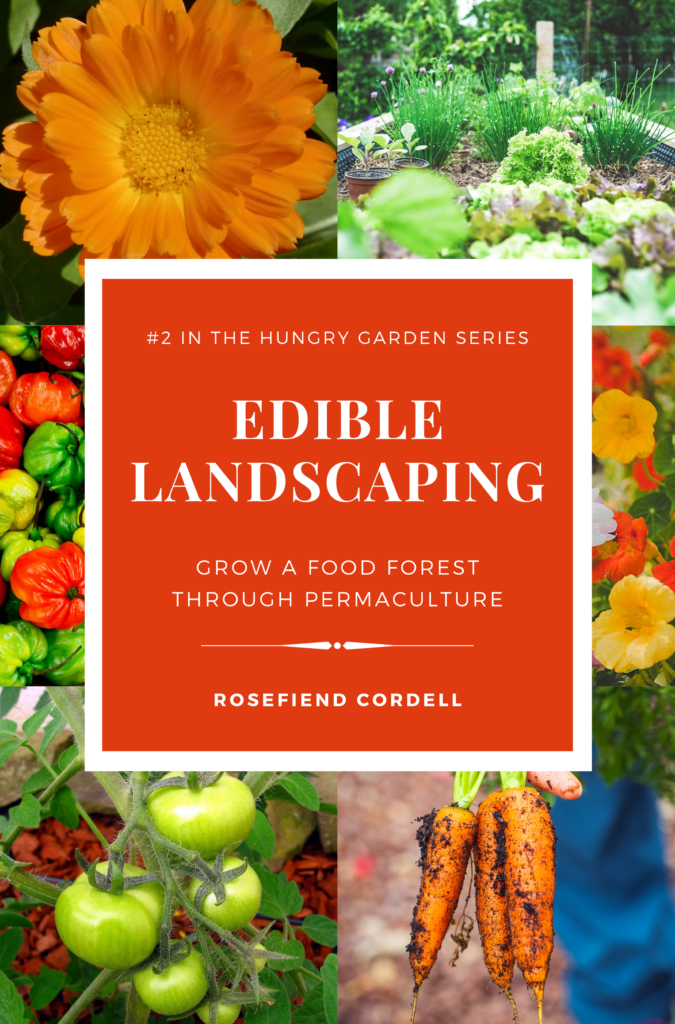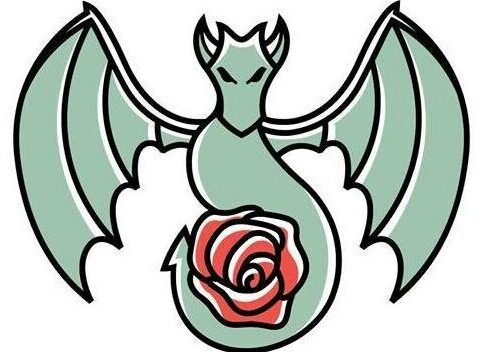I figure my readers all have the sense that God gave geese, but all the same, here’s a caveat: Don’t eat flowers if you don’t know that they’re edible! Don’t stick flowers into your mouth at random! You don’t even know where that flower’s been.
Also, don’t use pesticides on your edible flowers, which seems like a smart choice anyway.
Edible flowers are a nice way to doll up your salads and add color to your container garden.
Like herbs, edible flowers should be picked in the morning when their flavor is best. Shake off any bugs. Remove the pollen and stamens from the flowers, as well as the sepals (the little green modified leaves at the bottom of the flower) just before use, as the flower will wilt more quickly without it. Rinse the flower, then let it dry on paper towels.
Alliums
(These include onions, leeks, garlic, chives, ramps, shallots, etc.) – If your onion plants bolt, the flowers are also edible (as are all parts of the plant). They’ll add onion/leek/garlic etc. flavor to your salads or soups. Chive blossoms, like the chives, add a light onion flavor to your food.
Begonias
The leaves, flowers, and stems of these are edible, and the stems can be used in the place of rhubarb. Like rhubarb, these plants are high in oxalic acid – so if you have a sensitivity to oxalic acid, pass on these.
Bergamot (Monarda)
Though these smell like the bergamot in Earl Grey tea, that is actually the peel of a bergamot orange. These flowers are good to add to cakes, drinks, or salads.
Borage
These are a pretty sky-blue blossom that taste something like cucumbers. Great in salad, delicious in lemonade.
Calendula
Also called pot marigolds, or poor man’s saffron. These are popular edible flowers, with a range of flavors – only the flowers on these plants are edible. Its golden-orange petals work well in soups, salads, or pasta, and of course salads. Use these to brighten up your scrambled or deviled eggs. Saute them in olive oil and they taste like saffron.
Carnations
Flowers only, and cut the petals away from the bitter base to use them. These flowers are sweet, and make pretty garnishes on cakes and candy, as well as in your salad.
Chrystanthemums
These tangy/bitter flowers should be blanched before you eat the petals. Use in salads or to flavor vinegar. As with carnations, snip the petals off the bitter flower base.
Bachelor’s Button (Centaurea cynaus)
Flowers only, can be used as a spicy garnish.
Daylilies (Hemerocallis)
These have a slightly sweet flavor, like sweet lettuce, and different colored petals have different flavors. To me, the sweetest part of the petal is where it was attached to the plant. Pluck the petals off and use them to crown a frosted cake or to doll up a salad. Don’t eat too many of these, though, or you’ll end up in the bathroom reading War and Peace. Also, stick with only daylily petals, as the other lilies (Asiatic and Oriental lilies) are not edible.
English Daisy (Bellis perennis)
Pretty little flowers, though bitter enough to be used more for effect than for taste. Garnish; salads.
Fuchsia
Acidic flavor, but the fancy flowers are great for garnishes. Don’t use fuchsia that you recently bought from a nursery or greenhouse, as it will have been sprayed.
Sorrel (Rumex acetosa)
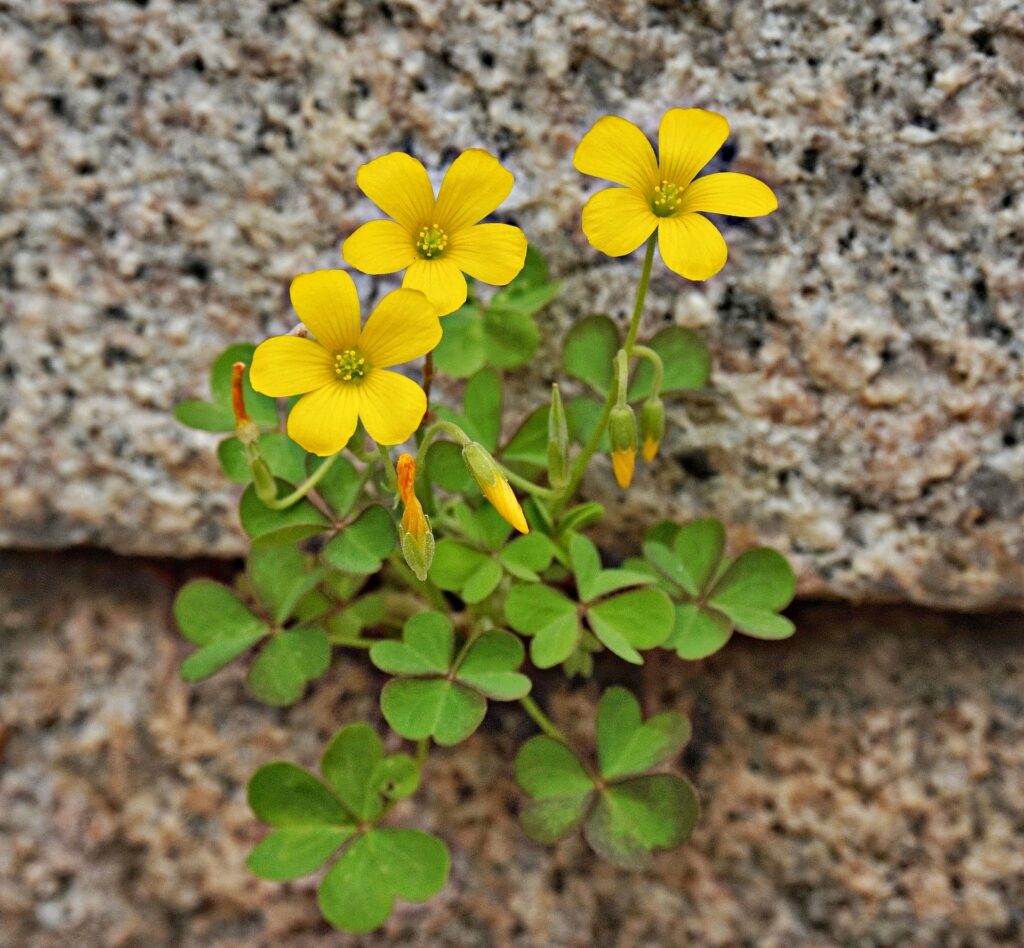
When I was a kid, I thought sorrel was a kind of clover. We’d nibble on this while sitting on the stairs waiting for the bus to show up at the elementary school. I wasn’t crazy about the bitter nose-wrinkly taste, though my friends seemed to enjoy it. Good for dishes that could use a bite of lemon.
Gladiolus
Remove the anthers before eating. The flowers are like bland lettuce, but you can use them to hold dollops of sauce or mousse. Toss in salads.
Hibiscus (Hibiscus rosa-sinensis)
Use the petals sparingly in salads or garnish. Petals can be dried to use in herbal teas. Note: Don’t add milk to a tea with hibiscus in it as the milk instantly curdles, and then it’s wasted tea and heartbreak all around.
Hollyhock
A bland-tasting flower but pretty! You can play with these and pretend they’re tiny ladies with pretty ball gowns.
Honeysuckle
The fragrant flowers taste like sweet honey. Only the flowers are edible! Don’t eat the berries – they’re poisonous!
Impatiens
A sweet flower. Garnish; salad; floated in drinks.
Johnny Jump-Ups (Viola tricolor)
Flowers are great in salads, as cake decorations, in desserts, floated in drinks. Also good with cheese.
Marigold (Tagentes)
The flowers, as with calendula, make a good saffron substitute. Also good in salads.
Nasturtiums
A common and popular edible flower, available in all kinds of colors and forms. Peppery flowers, tasting something like watercress, good in salads. Pickle the seed pods for a nice alternative to capers. Garnish; salads.
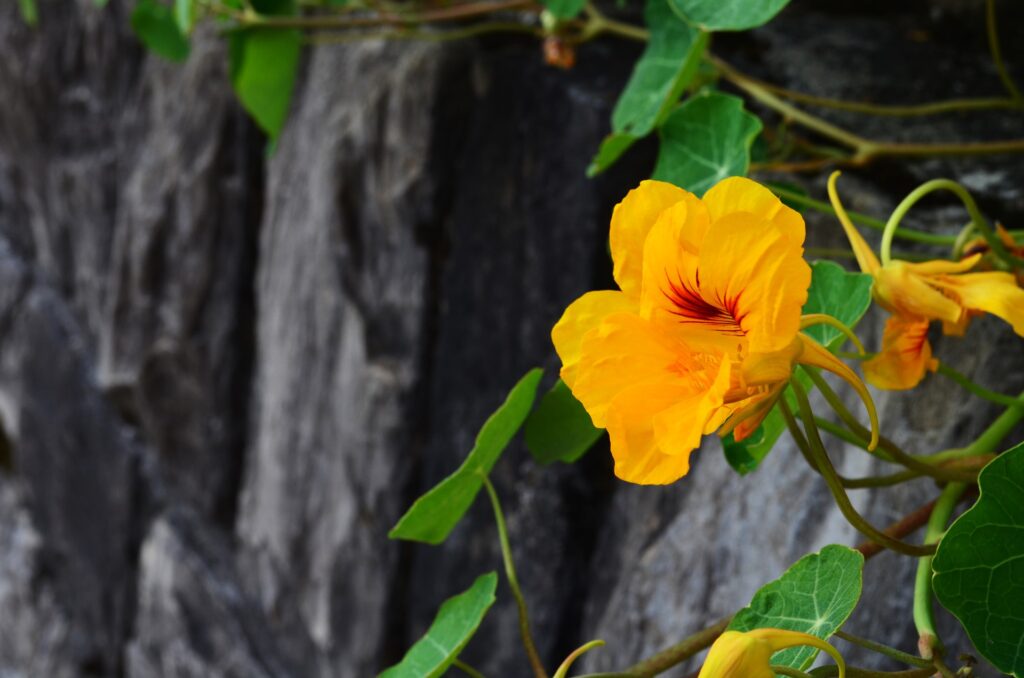
These can do without compost in their potting soil, because they flower best in lean soil. Add extra vermiculite to the nasturtiums’ soil.
Plant nasturtium seeds outdoors directly in their containers. If you want to spread out blooming times, plant batches of seeds two weeks apart. These guys don’t need a lot of fertilizer – you want them to produce flowers, not leaves. In late summer, nasturtiums might be attacked by aphids; cut the plants back, then spray with an organic insecticide (pyrethrum, Pyola).
Pansy (Viola x wittrockiana)
Another popular edible flower. Use in fruit salads, green salads, soups. A good cold-weather plant – pot these up in fall with ornamental kale and they’ll smile at you through the snow.
Phlox (Phlox paniculata)
Eat the tall-growing perennial phlox flowers only. Creeping phlox, the low-growing spring flower, is not edible. Now that that’s out of the way, phlox is great in fruit salads.
Primrose (Primula vulgaris)
Aka cowslip. A sweet but bland flower. Pickle the flower buds. Cook as a vegetable, ferment into a wine, or just toss them in a salad.
Queen Anne’s Lace (Daucus carota)
First off, be very familiar with these in the wild, and don’t pick them until you can also identify its evil twin, Wild Hemlock, which is poisonous and blooms at about the same time. Queen Anne’s Lace has a larger, tighter umbel of lacy white flowers, and there is always a single tiny purple flower in the center of the umbel. Wild Hemlock has a sparse umbel and lacks the tiny purple flower. Queen Anne’s Lace also has a hairy stem while Wild Hemlock has a smooth stem. Queen’s Anne Lace also smells something like carrots, because this plant is a precursor to the carrots we have today.
ANYWAY these flowers are great in salads. Also you can eat the root like a carrot, though it will not be as flavorful as garden carrots. But if you’re trapped out in the woods in some kind of “Naked and Afraid” reality show, there you go.
Rose
The queen of flowers is more than just a pretty face, because these blossoms bring it. All roses are edible. The petals can garnish ice cream, desserts, salads, or be floated in drinks. You can use the petals to make ice cream, syrup, jellies, perfumed butters, spreads, preserves, and tea. If you’re familiar with Middle Eastern cuisine in any way, you’ll find all kinds of heavenly rose foods, cakes, rosewater drinks, and desserts that are a delicious foretaste of heaven. Just stick a rose in a giant container with a healthy dose of compost, fertilize it nine ways to Sunday, and cover yourself in rose blossoms, why not.
Scarlet Runner Beans
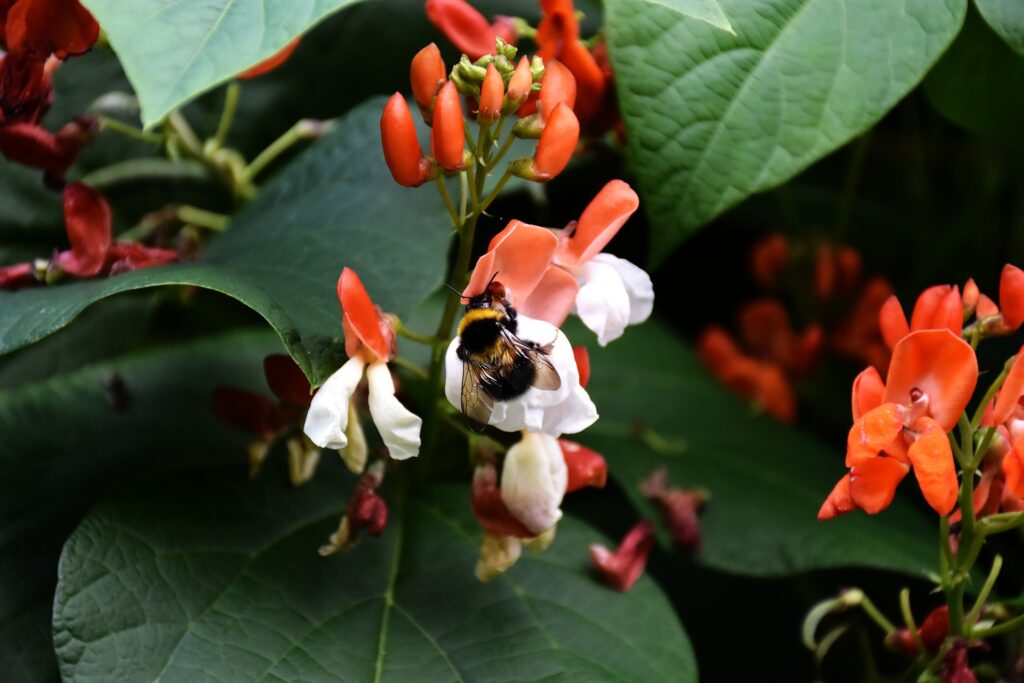
These fancy red blossoms can also be eaten. Garnish your soup and salad with them.
Scented Geraniums
The taste of the flowers correlates with the scent of the leaves, so your orange-scented geraniums will have orange-scented flowers. Garnish deserts, float them in drinks, freeze them in ice cubes. Most scented geraniums are fine, EXCEPT for the Citronelle variety, which might not be edible, and would probably taste like Mosquito-B-Gone anyway.
Snapdragons (Antirrhinum spp.)
If you squeeze the sides of a snapdragon blossom, it opens its little mouth and says “rawr rawr.” Or maybe that’s me. These flowers are edible, though flavor ranges from bland to bitter. Probably best as a garnish. In Missouri, the plant will stay green through November.
Squash and Zucchini
Use the blossoms of the male flower, of course (unless you’re starting to get overloaded with squash). You can put them into salads, but you can also stuff the blossoms with goat cheese mixed with herbs, then fry them. You can put them on a cheese pizza with fresh pesto.
Violets
Both the young leaves and the flowers are great in salads. Violet flowers can also be floated in drinks, frozen in ice cubes, and to doll up your cakes. Violets crystallized in sugar are both pretty and sweet. Their leaves can also be cooked like spinach.
From my upcoming book EDIBLE LANDSCAPING: FOODSCAPING AND PERMACULTURE FOR URBAN GARDENERS
